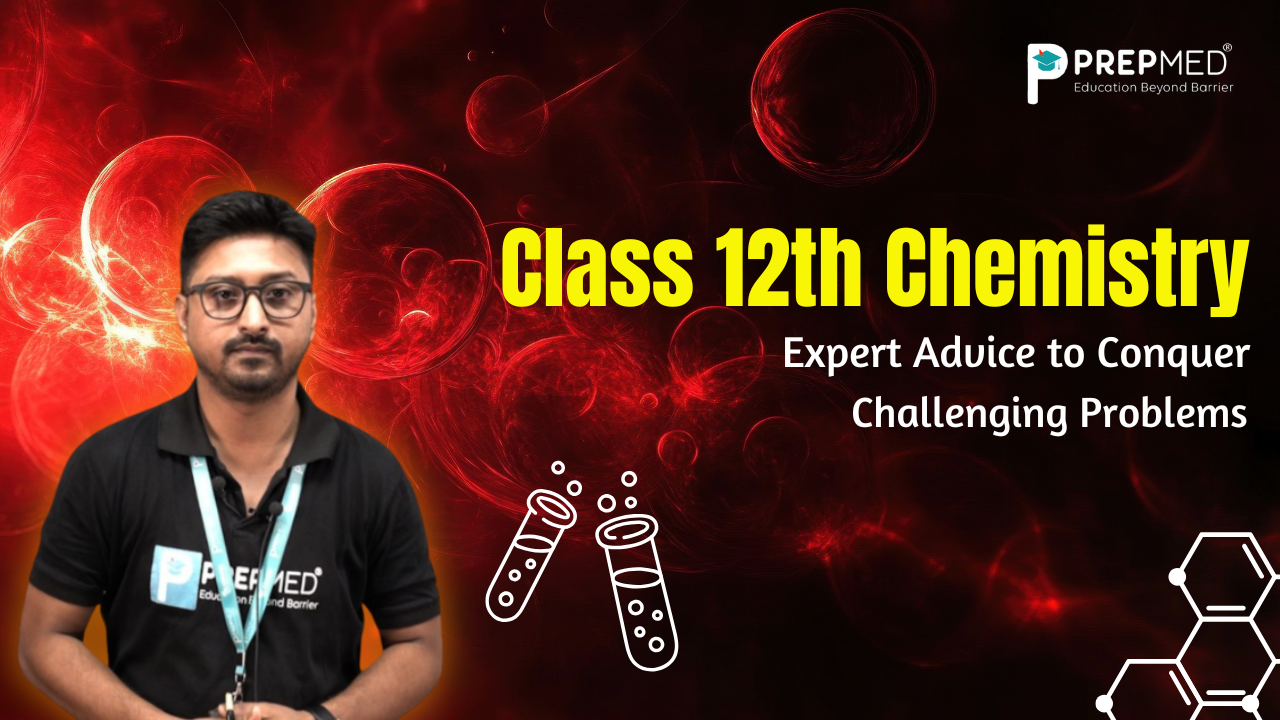February 28, 2025
Class 12th Chemistry: Expert Advice to Conquer Challenging Problems
Students frequently experience difficulty with the complex subjects and challenging problems found in Class 12 Chemistry chapters. To succeed, it’s essential to study the subject systematically. This guide provides expert advice that demonstrates how to solve and conquer complicated problems through structured step-by-step processes.
By understanding the core principles of organic inorganic and physical chemistry, alongside learning essential problem-solving techniques, students can develop strong analytical and reasoning capabilities. Students should focus on the main aspects: thorough conceptual understanding alongside practicing diverse problems and developing the skill in identifying the types of questions asked from certain chapters. Students will discover techniques for designing efficient study schedules while learning to utilize reference books online tutorials and group discussions for better understanding.
Creating the proper mindset combined with preparation strategies makes solving complex Class 12 Chemistry problems achievable and enables students to handle exams with confidence while enhancing their exam performance.
What are the challenges faced by students in chemistry?
Conceptual Understanding: Understanding complex concepts such as electrochemical reactions as well as reaction mechanisms proves challenging for students to visualize and understand.
Memorisation vs Applications: Students typically memorize information but some chemical concepts need application-based knowledge instead of memorization. Students should concentrate on understanding how to apply the concepts rather than memorizing information.
Numerical Problems: Students should practice solving numerical problems involving calculations while maintaining consistency, high precision, and accuracy levels.
Organic Reaction Mechanism: Understanding organic reaction mechanisms becomes challenging because students need complete conceptual understanding and clarity.
Overcoming Tough Chemistry Problems in Advanced Chapters
Chapter: Electrochemistry
Among all the Class 12th Chemistry chapters, this particular chapter stands as one of the most challenging ones. A majority number of students experience difficulty while solving questions from this segment.
The following list represents the different types of questions asked from this chapter in the exam:
- By using the Nernst Equation, calculating the cell potential.
- Solving problems and calculating the derivations related to Gibbs free energy and equilibrium constant.
- Numericals on conductance and molar conductivity
- Faraday’s Laws of Electrolysis
Tips to Solve:
- Try to remember all the vital equations and understand their derivations.
- Make a revision sheet to memorise the key formulas.
- Don’t forget to pay attention to the unit conversions.
Chapter: Chemical Kinetics:
Another important yet difficult chapter of Class 12 physical chemistry. The chapter enables the students to grasp a thorough understanding of the different aspects of reaction rates and mechanisms.
The following section lists the different types of questions asked in the exam from this chapter:
- Students need to determine and calculate rate constants and reaction orders.
- Students must solve specific problems related to first and second-order half-life reactions.
- Using the Arrhenius equation, calculation of activation energy.
Tips to Solve:
- Students need to understand the various integrated rate law expressions that describe different reaction orders.
- Apply logarithmic properties for easier calculations.
- Students should first understand the question thoroughly by reading it before solving it.
Chapter: The d-and f-block Elements:
Students often find this chapter difficult to understand. Students who grasp the fundamental characteristics of d and f-block elements along with their radioactive behavior and similar electronic configurations will achieve high grades in this chapter.
The following section provides an overview of the different types of questions asked in the exam from this chapter:
- Students need to explain the trends in how the transition metal ions display changes in the oxidation states, magnetic properties, and color.
- Questions from the Electronic configuration were asked in the examination.
- The question paper for the exam included several questions about the applications and different characteristics of d-block and f-block elements.
Tips to Solve:
- Explain how electronic configurations together with stability trends for different oxidation states can help solve the problem.
- Practice balancing reactions systematically.
- Obtain a thorough understanding of d-block and f-block elements and their properties.
Chapter: Coordination Compounds:
This chapter focuses on the chemical species formed by transition metals and ligands, which students often find to be the most challenging class 12th chemistry problem. This chapter covers the bonding, properties, and structural details of different compounds.
This section lists the different types of questions that are asked in the exam from this chapter:
- Students must learn to determine and identify the hybridisation patterns and the geometrical structure of the complexes.
- Students need to learn how to name coordination compounds according to International Union of Pure and Applied Chemistry (IUPAC) standards.
- Students need to learn crystal field splitting energy concepts and magnetic moment calculations for examinations.
Tips to Solve:
- Students need to learn about Crystal Field Theory (CFT) as well as its application to predict the magnetic properties of complexes.
- Identify high-spin or low-spin configurations by using ligand strength.
Chapter: Aldehydes, Ketones and Carboxylic Acids:
The study of organic chemistry devotes its core focus to understanding how carbonyl and carboxylic acids functional groups exhibit their chemical reactivity and behavior. The chapter covers fundamental reactions alongside their mechanisms which frequently appear during examinations.
The following section lists the different types of questions that appear on exams from this chapter:
- Students must practice writing reaction mechanisms for Aldol condensation as well as Cannizzaro reaction and Clemmensen reduction.
- Students need to recognize the products formed when nucleophilic addition occurs to carbonyl compounds.
- Acidic strength comparison of carboxylic acids.
Tips to Solve:
- Learn the reactive properties of functional groups along with fundamental reaction mechanisms.
- Students should practice recognizing intermediates that occur during multi-step chemical reactions.
- Learn and understand all the properties together with the names of the reactions.







